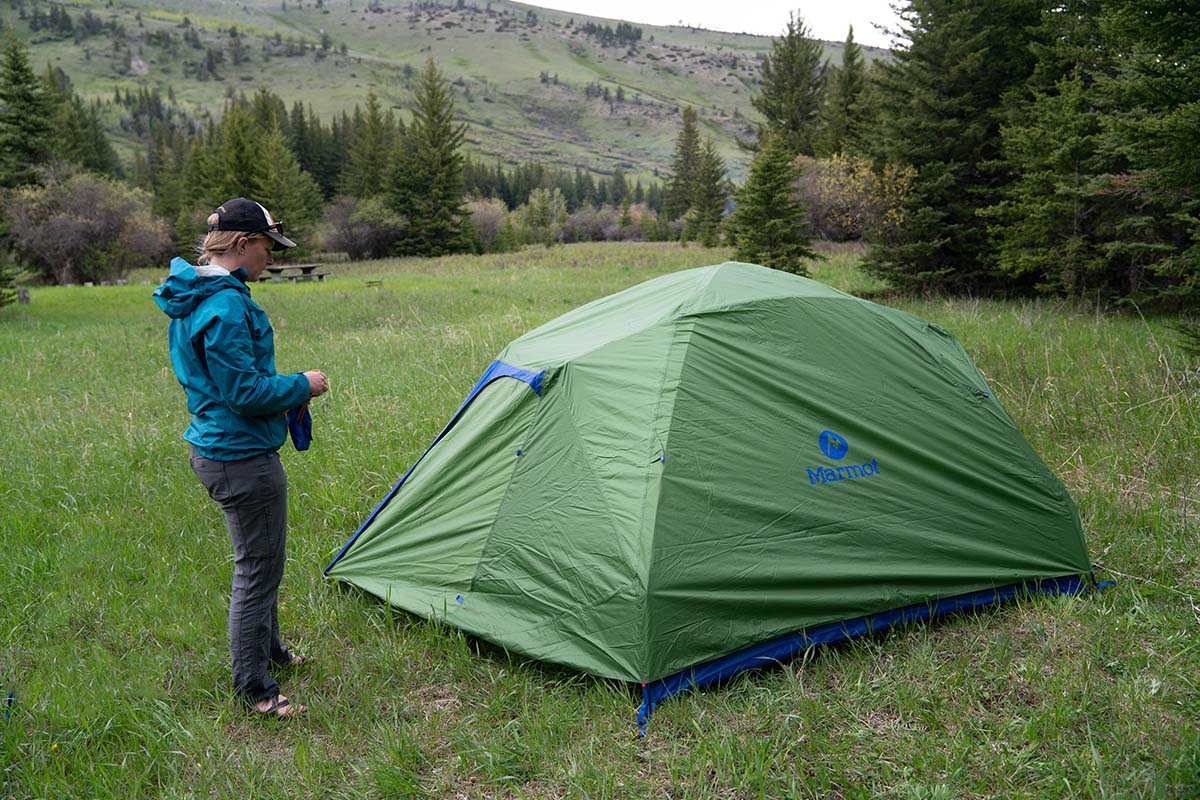

Price: $399
Floor area: 52.7 sq. ft.
Peak height: 52.8 in.
Weight: 9 lb. 3.8 oz.
Capacities: 1P, 2P, 3P, 4P
What we like: An affordable crossover design that can pull double duty on car camping and short backpacking trips.
What we don’t: Lack of internal storage; considerably less spacious than a dedicated camping tent.
See the Marmot Tungsten 4P
California-based Marmot has been in the outdoor gear game for more than half a century and is a particularly strong player in the tent market. Their Tungsten slots in as a versatile option for car camping and short backpacking trips, with a practical balance between weight and livability for pulling double duty. We spent several nights testing the four-person version in the mountains and along the rivers of western Montana and came away with mostly high praise. You can go lighter with a true backpacking tent or bigger and more durable with a dedicated car camping design, but the Tungsten is a pretty effective middle ground. Below we outline our experiences with the Tungsten 4P. To see how it stacks up to the competition, check out our article on the best camping tents.
In terms of livability, the Marmot Tungsten 4P strikes a decent middle ground between streamlined backpacking tents and palatial car camping designs but does trend more toward the former end. To illustrate this, it’s worth comparing the Tungsten to tents at either end of the spectrum: The North Face Wawona 4 (designed for camping) and Big Agnes Copper Spur HV UL4 (built for backpacking). In terms of interior space, the Tungsten is the smallest of the bunch, with just 52.7 square feet of floor area, while the Wawona and Copper Spur offer 58.1 square feet and 57 square feet, respectively. The Marmot’s 52.8-inch peak height is also on the shorter end, resulting in a noticeable reduction in headroom compared to the Wawona (68 in.) but a little more than the Copper Spur (50 in.). In other words, while the Tungsten’s compromised interior was noticeable when tested back-to-back with the Wawona 4, those coming from a backpacking background will likely find it adequately roomy.
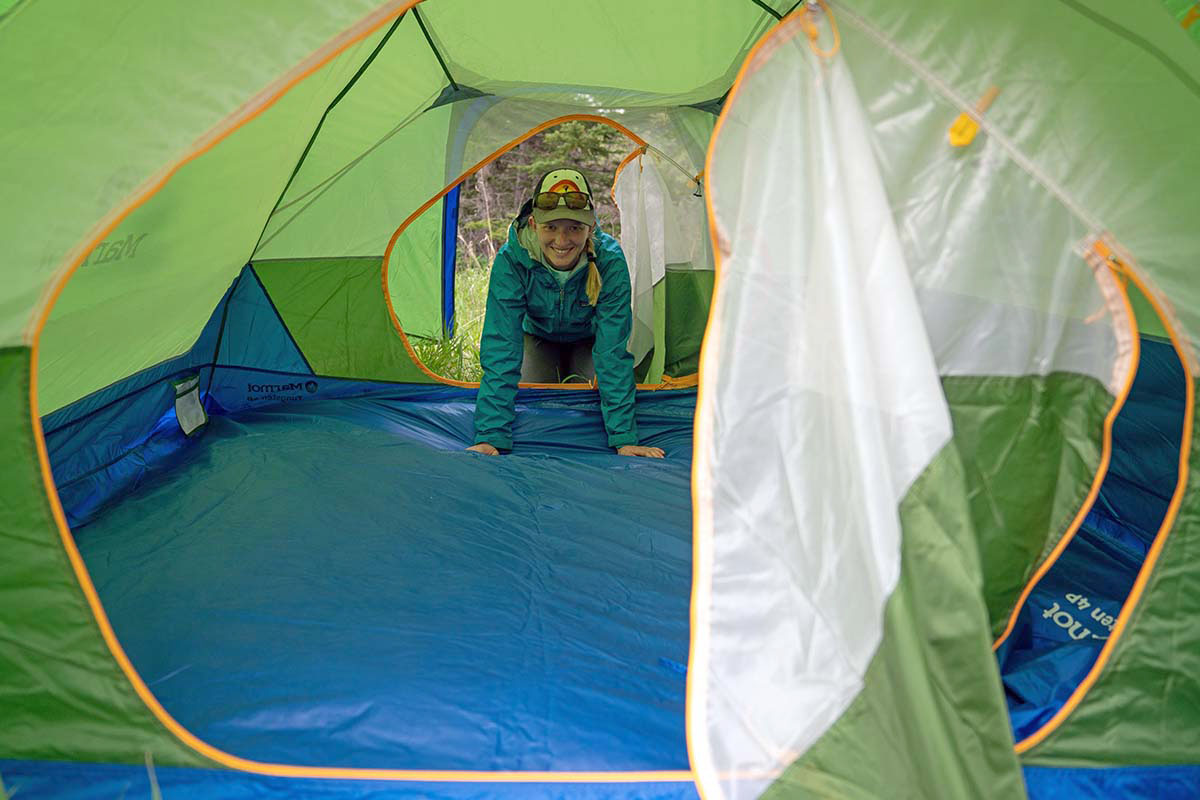
The Tungsten proved to be reliably storm-worthy in testing. The full-coverage rainfly leaves very little of the tent body exposed to the elements, resulting in no leakage even in heavy, sideways rain. Wind protection is similarly impressive, which is likely due to the tent’s traditional dome shape and shorter peak height. For comparison, many dedicated camping tents—like REI Co-op’s Wonderland 4— have a taller and more upright shape, which can result in a sail-like effect in blustery weather.
That said, there is one caveat: The Marmot Tungsten 4P needs to be guyed out in order to maximize weather-worthiness. Thankfully, Marmot included enough guylines to batten down the hatches, but not enough stakes to secure them all. To be sure, stakes are relatively cheap and easy to come by, but I was disappointed the first time I pitched the tent. Had it been extremely windy that day, I likely would have needed to improvise or consider camping in a more protected spot (or not at all).
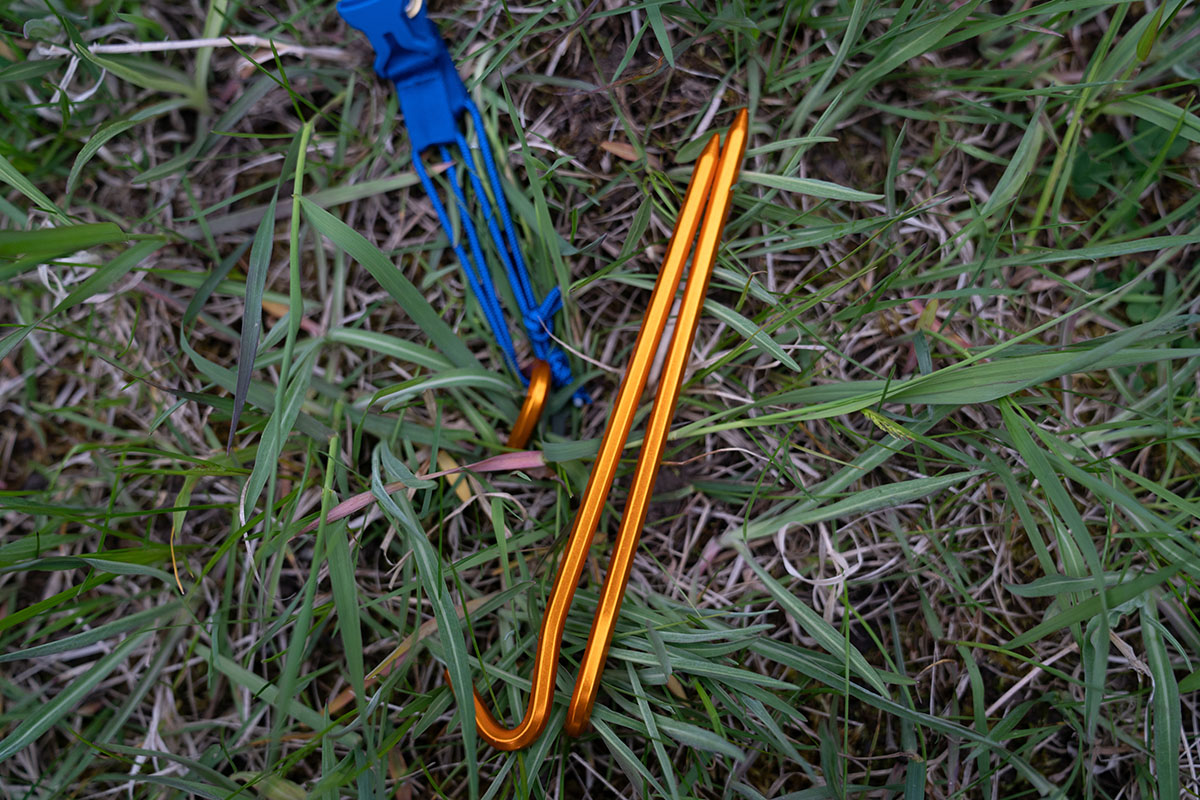
The Tungsten’s mesh-heavy build translates to great ventilation with the rainfly off, but it’s a different story when you need to seal everything up in a storm. It doesn’t help that the fly only features a single strutted vent, and the fabric surrounding the vent is prone to billowing in the wind, leading to reduced airflow. Thankfully, I’ve been able to leave the vestibule doors open overnight on most outings thanks to favorable weather, but those camping in inclement weather will likely wake up to condensation buildup along the interior due to the lack of circulation.
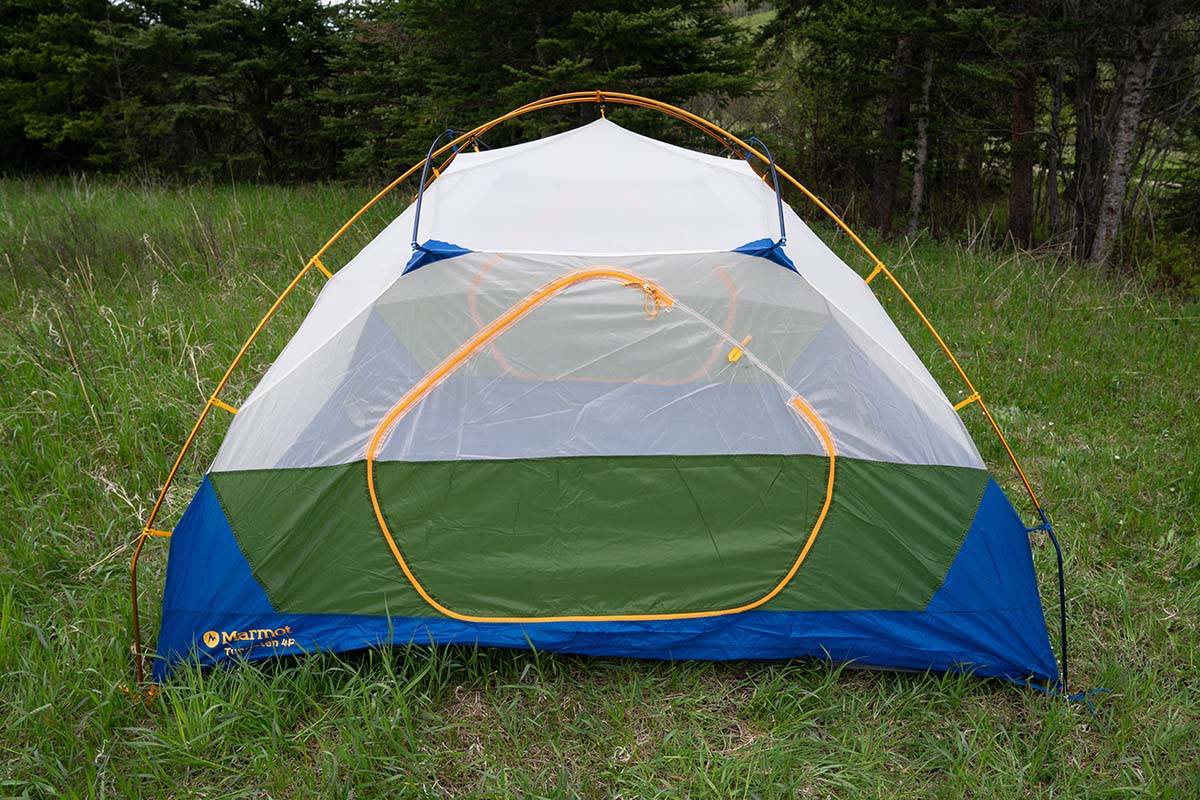
In addition to being on the less spacious end for car camping, the Tungsten’s limited internal storage is its biggest downside, in my opinion. Specifically, you get four mesh pouches—one at each corner—for stashing necessities like a headlamp, lip balm, or Garmin inReach Mini. However, they’re small enough that most books won’t fit, and they tend to sag when weighted down due to the fact that the bottom portion isn’t connected to the tent. Marmot also included two triangular “Lampshade” pockets overhead for creating diffuse lighting from your headlamp, but again, I didn’t find these to be very functional in use. It’s not a total miss by any means, but I do think Marmot could have been a little more intentional with the Tungsten’s storage layout.
All that said, the tent’s two large vestibules do help offset the lackluster internal storage. For reference, total vestibule space measures 36.6 square feet, which is bigger than with you get with both The North Face’s Wawona 4 (27.6 sq. ft.) and Big Agnes’ Copper Spur HV UL4 (28 sq. ft.). In practice, I found each vestibule plenty big for stashing a backpack, shoes, and other wet and dirty gear I didn’t want to bring inside.
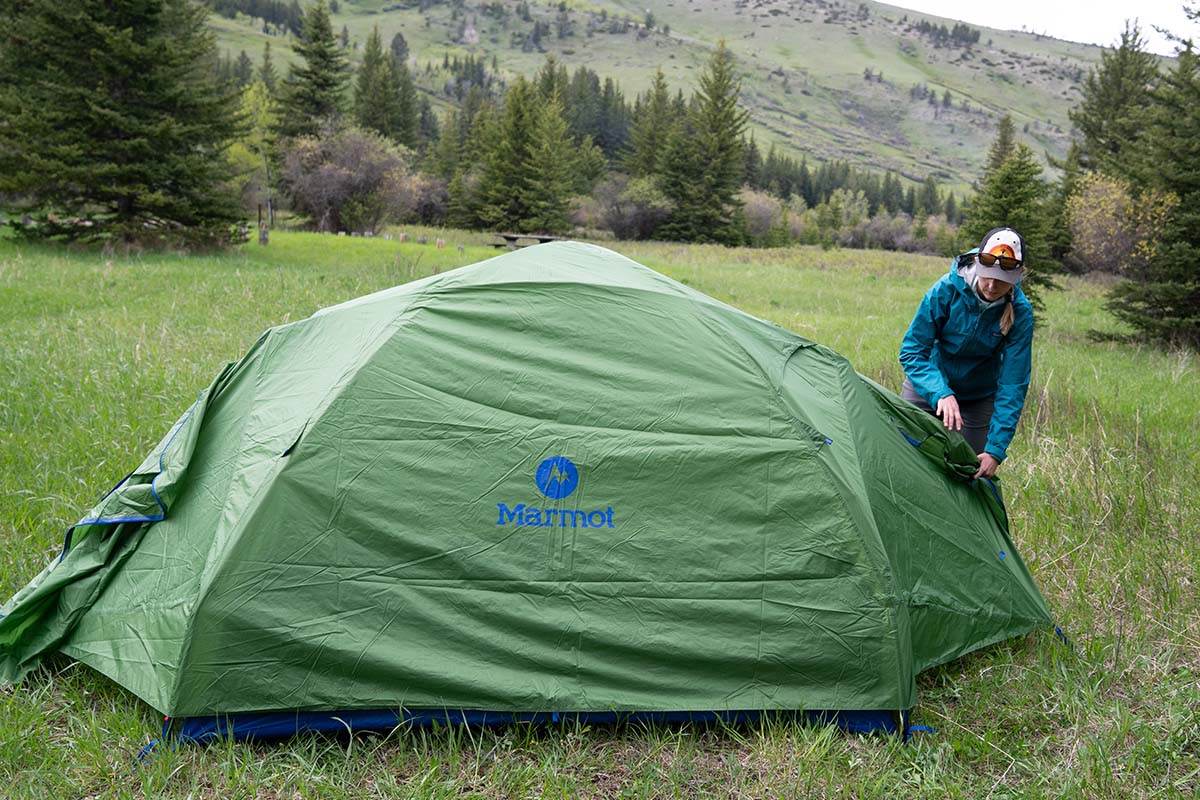
Overall, the Tungsten 4P exceeded my expectations in terms of build quality. Marmot doesn’t provide a denier rating to denote fabric thickness, but the floor, canopy, and rainfly all have a reasonably solid and confidence-inspiring feel. They’re certainly thinner than what you get with a heavier car camping tent like The North Face’s Wawona, which features a 150D floor and 75D canopy and rainfly, but that’s not too surprising given the Marmot’s lower weight and crossover intentions. It’s also worth noting that the tent comes with a footprint, which isn’t always the case and will help maximize the floor’s lifespan (alternatively, you can ditch the footprint on weight-conscious backpacking trips). I do have some concerns about the plastic buckles used to secure the rainfly, which strike me as susceptible to cracking from a wayward boot, but I haven’t had any issues to date.
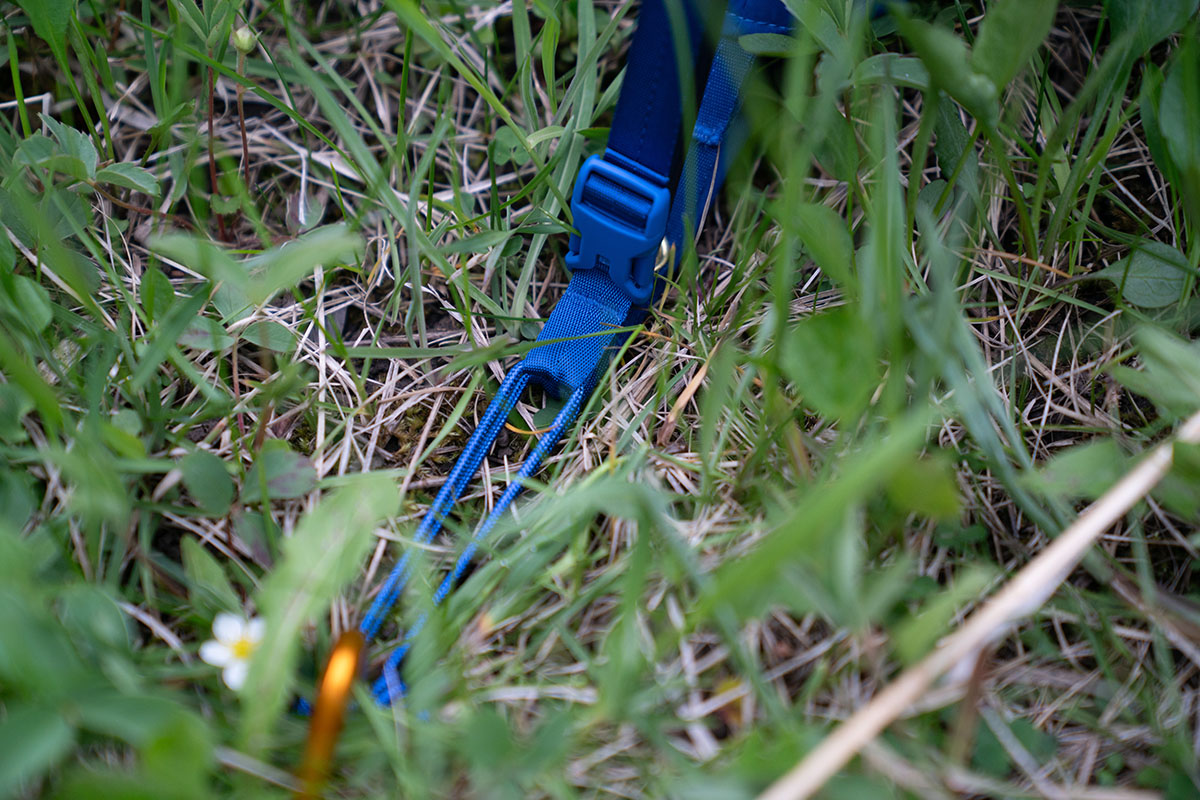
Weight is one area where the Tungsten handily beats out much of the car camping competition. To be clear, it’s no featherweight at 9 pounds 3.8 ounces all in but handily undercuts more spacious alternatives like the Wawona 4 (13 lb.) and Nemo’s Aurora Highrise 4P (15 lb. 14 oz.). On the flip side, you can go lighter with a streamlined backpacking design like the Copper Spur HV UL4, which checks in at just 5 pounds 11 ounces, but that tent is much pricier than the Tungsten and uses considerably thinner fabrics that are more susceptible to wear and tear. All told, I feel Marmot struck a really nice balance between weight savings and durability with the Tungsten.
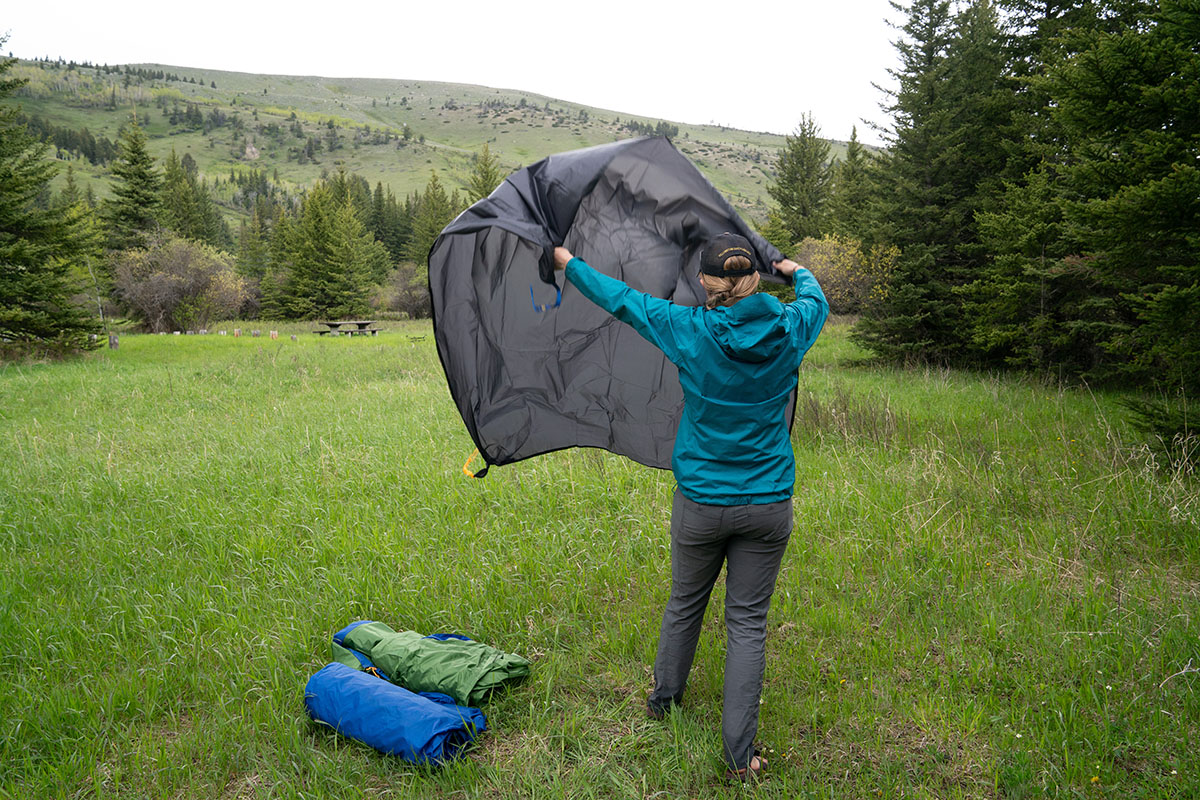
When the time comes to pack everything away, the Tungsten 4P rolls up easily into the provided storage bag with very little precision required. For reference, the final package measures 8.3 by 24.8 inches, which is notably smaller than The North Face’s Wawona 4 (10 x 27 in.) but bulkier than Big Agnes' Copper Spur HV UL4 (7 x 22 in.). That said, I’ve found that divvying up the components (canopy, rainfly, poles, and stakes) with a partner or two makes it perfectly reasonable for hauling into the backcountry, and leaving the footprint behind will also reduce weight and packed size.
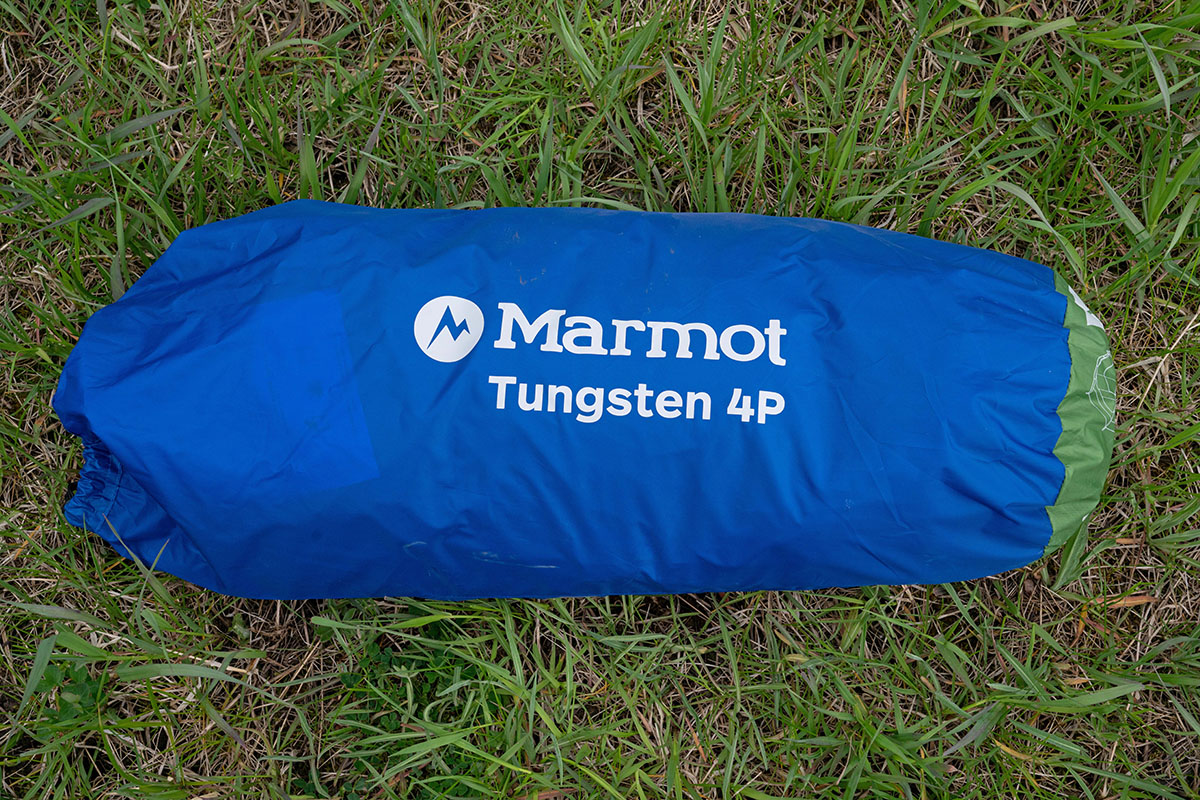
The Marmot Tungsten is a cinch to set up thanks to its fully freestanding build, intuitive pole layout, and color-coded components. In practice, I was able to pitch the tent in about five minutes and found the process easy to do solo: Simply lay everything out, align the poles with the corresponding corners, insert the pole ends into the grommets, and secure the clips along the tent body. The center ridge pole is the final piece of the puzzle and runs across the peak to maximize headroom. If weather is in the forecast, attaching the rainfly is as simple as lining things up, clipping it in at the corners, cinching it down via the buckles, and staking out the vestibules. Taking the tent down is just a matter of reversing the process. As I mentioned above, my only complaint is that Marmot doesn’t include enough stakes to fully guy out the tent. If you anticipate getting out in blustery conditions, it’s definitely worth packing extra stakes—we’re big fans of MSR’s Ground Hog stakes, but there are plenty of cheaper options available that will also get the job done.
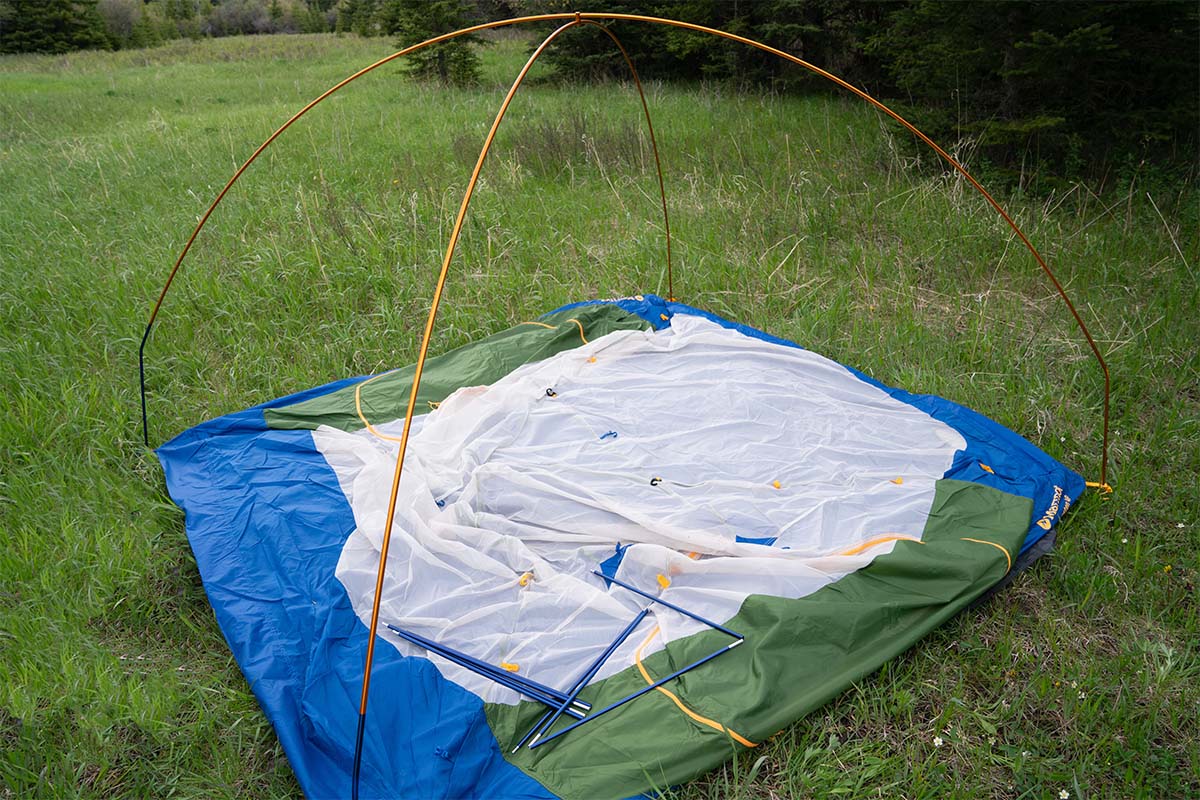
We tested the four-person version of the Marmot Tungsten for this review, and it’s also sold in one, two, and three-person capacities. As expected, the three smaller models are both cheaper and lighter but feature smaller floor plans and less headroom. For comparison’s sake, the Tungsten 3P is $100 cheaper than the 4P at $299, features a 46.1-inch peak height, and offers 40.9 square feet of floor area with 18.3 square feet of total vestibule space. It’s also over 2 pounds lighter at 7 pounds 1.2 ounces all in and packs down noticeably smaller (7.1 x 23.2 in.). Otherwise, overall construction and build quality are largely similar, meaning that a final decision will largely come down to how you prioritize price, weight, and overall livability.
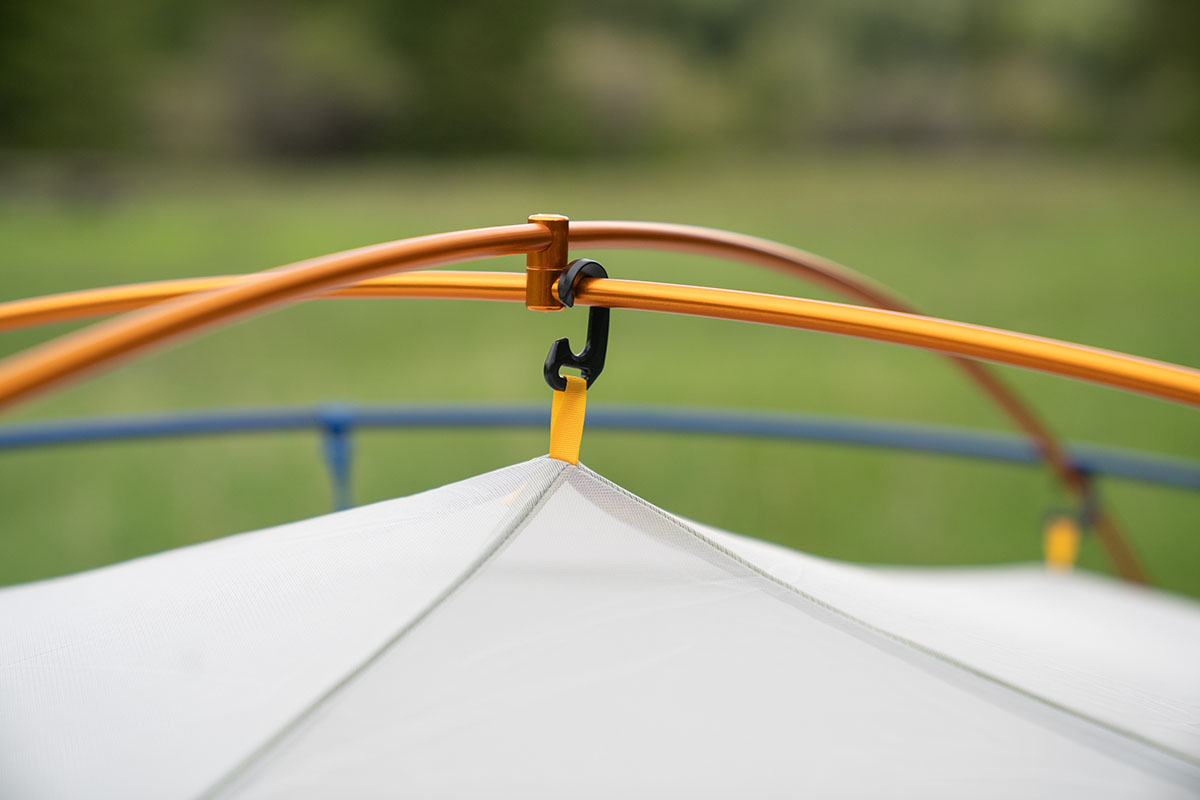
| Tent | Price | Floor | Height | Capacities | Weight | Packed Size | Doors |
|---|---|---|---|---|---|---|---|
| Marmot Tungsten 4P | $399 | 52.7 sq. ft. | 52.8 in. | 1P, 2P, 3P, 4P | 9 lb. 3.8 oz. | 8.3 x 24.8 in. | 2 |
| Marmot Limestone 4P | $429 | 59.2 sq. ft. | 63 in. | 4P, 6P | Unavailable | 10.4 x 24.4 in. | 2 |
| Big Agnes Blacktail 4 | $350 | 60 sq. ft. | 50 in. | 2P, 3P, 4P | 7 lb. 13.0 oz. | 8 x 22 in. | 2 |
| MH Mineral King 3 | $375 | 42.5 sq. ft. | 48 in. | 2P, 3P | 7 lb. 1.2 oz. | 7 x 25 in. | 2 |
| Big Agnes Copper Spur 4 | $800 | 57 sq. ft. | 50 in. | 1P, 2P, 3P, 4P | 5 lb. 11.0 oz. | 7 x 22 in. | 2 |
Marmot’s Tungsten 4P offers well-rounded performance for car camping and short backpacking trips, earning it our vote as the best crossover tent this season. However, as with most designs that aim to do it all, the Tungsten comes with some notable sacrifices, the biggest of which is interior space. If that’s your primary consideration, it’s worth considering a dedicated camping design like Marmot’s own Limestone 4P. Stacked up against the Tungsten, the Limestone is nearly 10 inches taller at its peak, offers 6.5 additional square feet of floor area, and uses thicker materials for increased durability. As expected, this does result in a noticeable boost in heft and larger packed size, but car campers sticking close to their vehicle likely won’t mind those trade-offs. For the occasional backcountry trip, however, we’d stick with the lighter and more compressible Tungsten.
Another crossover design we love is Big Agnes’ Blacktail 4. For around $50 less than the Tungsten, the Blacktail is larger by around 7 square feet, lighter by about a pound and a half, and smaller when packed away for storage. On the flip side, the Tungsten is taller by 2.8 inches at its peak, offers significantly more vestibule space (36.6 sq. ft. vs. 22 sq. ft. for the Blacktail), and comes with a footprint included (Big Agnes sells one separately for the Blacktail, which will run you an additional $60). Whether or not these advantages are worth the price penalty is up to you, but we personally think the Tungsten balances its priorities a bit better than the Blacktail.
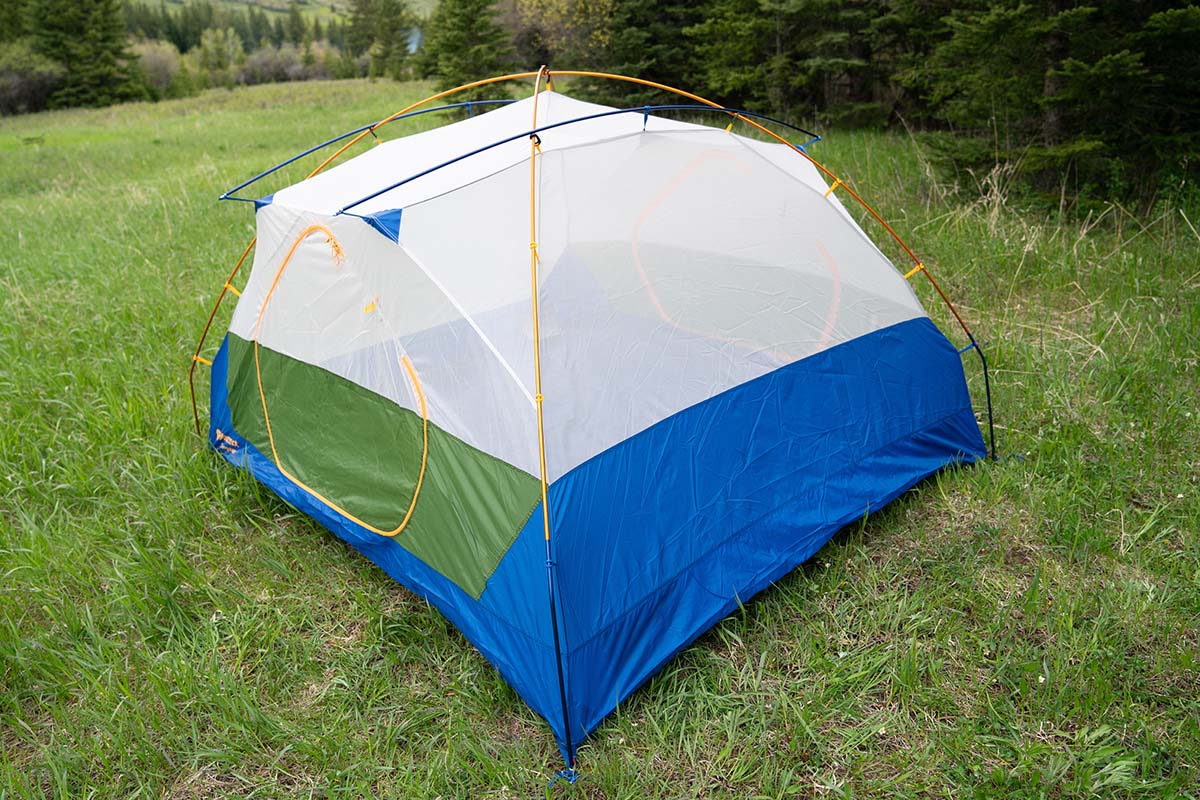
Sticking within the crossover space, Mountain Hardwear’s Mineral King trends a little more toward the backpacking end of the spectrum than both the Blacktail and Tungsten. The first indication is that the Mineral King is only offered in two- and three-person capacities, with the latter offering 42.5 square feet of interior space and a 48-inch peak height in a 7-pound-1.2-ounce package. As expected, the Mineral King 3 also features less vestibule space (20.9 sq. ft. total), although we appreciate that Mountain Hardwear retained two doors and vestibules, along with a footprint for added assurance when camping on rough surfaces like rock. Finally, like the Tungsten, the Mineral King uses relatively robust fabrics that should hold up well over time. All told, if you can make the smaller dimensions work, we think it’s an excellent tent that will save you a bit of cash compared to the four-person Tungsten.
Finally, we’d be remiss not to include a comparison to a true backpacking tent like Big Agnes Copper Spur HV UL4. Right away, we’ll note that the Copper Spur is a sizable investment at $800 and overkill for those who only get into the backcountry on occasion. But if you can justify the expense, there’s certainly a whole lot to like: The Copper Spur is larger by around 4 square feet, considerably lighter at 5 pounds 11 ounces all in, and features vestibules that can be converted to awnings to create a shaded patio area (trekking poles required). As expected, the drop in weight does come with compromises in durability—those who are hard on their gear may want to pick up a footprint (Big Agnes sells one for $100) or DIY with a cheaper ground tarp—but overall, the Copper Spur is incredibly well rounded for a lightweight backpacking design.
If you’re thinking about buying gear that we’ve reviewed on Switchback Travel, you can help support us in the process. Just click on any of the seller links above, and if you make a purchase, we receive a small percentage of the transaction. The cost of the product is the same to you but this helps us continue to test and write about outdoor gear. Thanks and we appreciate your support!
Depending on the seller, most products ship free in the United States on orders of $50 or more. International shipping availability and rates vary by seller. The pricing information on this page is updated hourly but we are not responsible for inaccuracies.